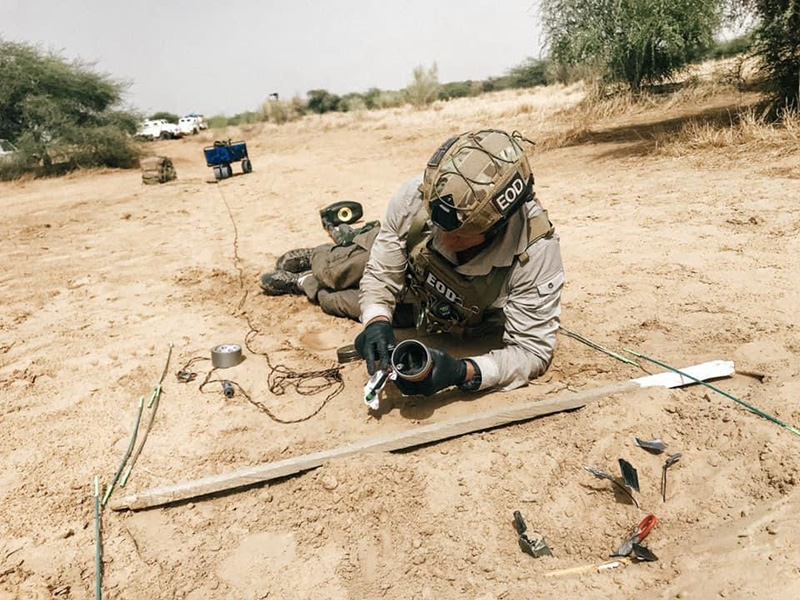In the majority of nations globally, the construction industry faces inherent risks associated with explosive threats, including unexploded ordnance, improvised explosive devices, and other explosive remnants of war or military training.
Mitigating these threats is crucial to ensuring the safety of construction workers, to protect equipment and infrastructure, and to foster safe and sustainable development.
Explosive threat mitigation – from mine action to battle area clearance, and from marine UXO clearance to a simple desktop threat assessment that could confirms there is no risk - is critical to the international construction industry.
It ensures the safety of construction workers, who may encounter explosive hazards during excavation, groundworks, or other construction activities such as piling.
By planning and implementing mitigation measures before a project even begins, construction companies minimise the risk of accidents, injuries, and fatalities – saving lives, saving money and saving reputational damage.
With proper planning and de-risking, critical infrastructure is also protected from damage.
Unexpectedly encountering unexploded ordnance (UXO) because of poor planning poses a significant threat of disruption, delay, and financial losses – not to mention the risk to people.
By committing to the effective mitigation of explosive threats, the global construction industry can also contribute to overall regional stability and post-conflict recovery efforts. Mitigation measures will prevent the inadvertent activation of explosive devices and support the clearance and remediation of contaminated areas.
The explosive challenges the international construction industry faces
There is the complexity of assessing which sites may be contaminated and what that contamination might look like. Construction sites could be in an area with a history of conflict or military activity, making it difficult to determine the presence and extent of potential explosive remnants.
A lack of access to accurate and up-to-date information can impede mitigation efforts too – however, SafeLane has its own internal research department which has access to hundreds of thousands of global records to support the development of desktop threat assessments. These are an essential component when planning for potential risk ahead of construction works – contact the team to discuss your project’s location and they can give you expert advice.
Another challenge to overcome is ensuring compliance with the relevant safety standards and regulations on a nation by nation basis. Construction companies need to navigate red tape and a myriad of national and international guidelines to implement appropriate risk mitigation measures.
Ensuring an effective explosive threat mitigation plan is properly scoped and delivered requires expertise and close coordination between various stakeholders, including contractors, engineers, and security professionals. SafeLane can support and deliver the entire process.
A final challenge to mention is the financial constraints that can pose a barrier to the implementation of robust mitigation measures, particularly for smaller construction companies operating in resource-constrained environments.
To effectively mitigate explosive threats in the international construction industry, several strategies and best practices can be employed. Firstly, conducting comprehensive risk assessments is essential.
Site-specific assessments can identify potential explosive hazards, assess the severity of the contamination risk, the potential impact on a project. They can also inform the development of mitigation plans. Engaging with local authorities, security experts, and other clearance organizations can provide valuable insights and guidance.
Integrating explosive threat mitigation into project planning and design is crucial for a constructor. Considering mitigation measures from the outset allows for cost-effective integration and reduces the potential for delays or project redesigns.
By promoting awareness and delivering safety training for construction workers, safety can be advanced. Providing education on recognising and responding to explosive threats enhances overall site safety and empowers workers to take appropriate action if a suspicious item is encountered.
Finally, collaborating with specialist explosive ordnance disposal (EOD) teams or clearance organisations can ensure the safe removal or destruction of explosive hazards. Such partnerships facilitate the timely clearance of affected areas and minimise disruption to construction activities. SafeLane can be your trusted partner.
Contact us to discover how we can support your construction project’s success – no matter where in the word you’re building your next development.


